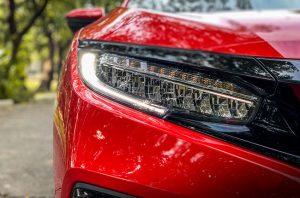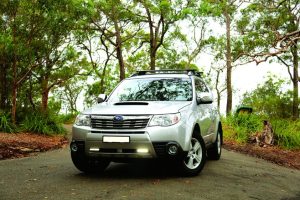Daytime Running Lights (DRLs) have become a staple feature in modern vehicles, glowing gently as cars cruise in broad daylight. At first glance, they may seem purely aesthetic—adding a signature glow to a car’s front fascia. But DRLs serve a deeper purpose: enhancing visibility and reducing the risk of collisions.
So, are DRLs just a design trend, or do they offer measurable safety benefits? This article explores the origin, purpose, and performance of DRLs, while also examining their aesthetic evolution.
What Are Daytime Running Lights?

Daytime Running Lights (DRLs) are low-intensity lights that automatically switch on when the vehicle is running and the main headlights are off. Typically positioned at the front of the vehicle, they’re not designed to illuminate the road, but rather to make the vehicle more noticeable to other road users.
Key Characteristics:
-
Automatically activated with ignition
-
Not as bright as headlights
-
Located in or near the headlamp cluster
-
Not intended for night-time driving
History and Global Adoption
DRLs were first popularized in Scandinavian countries in the 1970s, where low sunlight and long winters made vehicle visibility a priority. Countries like Sweden, Norway, and Canada made DRLs mandatory years before others followed.
| Region | DRL Regulation | Year Introduced |
|---|---|---|
| Sweden | Mandatory | 1977 |
| Canada | Mandatory for new vehicles | 1989 |
| European Union | Mandatory for all new vehicles | 2011 |
| United States | Optional (not mandated, but encouraged) | N/A |
Safety Benefits of DRLs
Multiple studies over the years have investigated whether DRLs actually reduce accidents. While results vary by region and traffic density, the general consensus supports their effectiveness.
Proven Advantages:
-
Improved visibility in daylight, dawn, dusk, and rain
-
Quicker detection of oncoming vehicles
-
Reduction in multi-vehicle daytime accidents
-
Lower motorcycle collision rates (motorcyclists often rely on DRLs)
Sample Study Data:
| Study | Findings |
|---|---|
| Transport Canada (2004) | 11% reduction in daytime crashes with DRLs |
| EU Commission Report (2006) | 5–15% reduction in daytime multi-vehicle accidents |
| U.S. NHTSA (2008, optional use) | Benefits in certain conditions; not mandatory |
Are DRLs a Legal Requirement?
Whether DRLs are required depends on your location. Here’s a quick overview:
| Country/Region | DRL Requirement |
|---|---|
| EU Countries | Mandatory since 2011 |
| Canada | Mandatory since 1989 |
| USA | Optional |
| Australia | Not mandatory |
| Japan | Recommended, not mandatory |
For countries where DRLs are not mandatory, automakers often include them as a standard or premium feature, especially in higher trims.
DRLs as a Design Element
As automotive styling has evolved, DRLs have become a canvas for brand identity. What started as basic incandescent bulbs has now transformed into striking LED strips, dynamic shapes, and unique light signatures.
Popular DRL Styles:
-
LED light pipes (used by Audi and BMW)
-
Halo rings (popularized by BMW)
-
Arrow-shaped DRLs (Hyundai, Toyota)
-
Double-slit or boomerang designs (Nissan, Lexus)
Modern DRLs do more than improve safety — they help vehicles stand out in traffic, reinforce brand identity, and enhance luxury appeal.
Types of DRL Technologies
| Type | Features | Common in |
|---|---|---|
| Halogen DRLs | Basic, cost-effective, shorter lifespan | Older models, economy cars |
| LED DRLs | Bright, energy-efficient, long-lasting, stylish | Most modern vehicles |
| Fiber Optic DRLs | Even illumination, high-end design appeal | Premium models, custom upgrades |
| OLED DRLs | Customizable patterns and shapes | Concept vehicles, luxury brands |
LED DRLs have become the industry standard due to their efficiency, brightness, and versatility.
Common DRL Misconceptions
Despite their benefits, there are some myths around DRLs:
| Myth | Reality |
|---|---|
| DRLs drain the battery quickly | Modern DRLs (especially LEDs) consume minimal power |
| DRLs are a fashion-only feature | Studies confirm visibility and crash-reduction benefits |
| DRLs replace headlights | They do not illuminate the road and should never be used instead of headlights |
| All vehicles have DRLs | Not true — many older models or basic trims may lack them |
DRLs vs. Headlights: What’s the Difference?
| Feature | Daytime Running Lights (DRLs) | Headlights |
|---|---|---|
| Purpose | Vehicle visibility | Road illumination |
| Intensity | Low | High (adjustable with high/low beams) |
| Operation | Automatic (with ignition) | Manual or automatic with sensors |
| Nighttime Use | Not suitable | Required |
How to Upgrade Your DRLs

If your vehicle lacks DRLs or has outdated halogen versions, an upgrade can enhance both safety and style.
Upgrade Options:
-
LED DRL Bulb Conversion Kits
-
Custom DRL Modules for Headlights
-
Aftermarket Bumper-Mounted DRL Strips
-
Multi-function DRLs with sequential turn signals
Installation Tips:
-
Choose CANbus-compatible kits to avoid error messages
-
Ensure proper voltage and resistance matching
-
Seal all wiring to avoid moisture intrusion
-
Confirm the upgrade is road-legal in your country
Buy Car Lighting online — explore a wide range of DRLs, LED kits, and lighting upgrades for your vehicle.
Final Thoughts
So, are DRLs a safety feature or a design statement? In reality, they’re both. Originally introduced to reduce daytime collisions, DRLs have evolved into one of the most iconic and stylish features on modern vehicles.
From boosting road visibility to showcasing brand identity, DRLs have earned their place in the spotlight. Whether you’re upgrading for safety, looks, or both, they’re a smart investment in your vehicle’s appeal and protection.
Stay visible. Stay stylish. Stay safe.